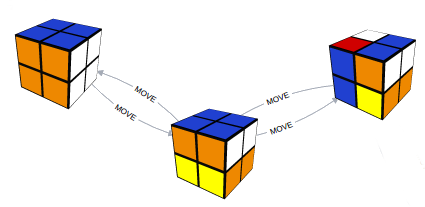This Week in Neo4j – Modeling Complex Financial Instruments, Loading Streaming Data, Solving a Rubik’s Cube

Developer Relations Engineer
4 min read

Welcome to this week in Neo4j where we round up what’s been happening in the world of graph databases in the last 7 days.
This week we learn how to model complex financial instruments, load streaming data into Neo4j, solve a Rubik’s cube, shuffle a pack of cards using random walks, and use Kettle as part of our ETL process.
Featured Community Member: Ron van Weverwijk
This week’s featured community member is Ron van Weverwijk, Data Engineer at GoDataDriven.

Ron van Weverwijk – This Week’s Featured Community Member
Ron is a long time member of the Neo4j community, and was one of the very first people that Rik interviewed on the Graphistania podcast, all the way back in March 2015.
I first met Ron in 2014 at a Neo4j training session that he was running. He’s run many more since than and has given our training team lots of useful feedback to help develop the material to ensure attendees have the best possible experience. Ron’s next Neo4j Masterclass is on 19-20 September 2018 in Amsterdam.
Ron is also a co-organiser of the Neo4j Amsterdam User Group, blogs about his work with Neo4j, and is a contributor to the popular APOC library.
On behalf of the Neo4j community, thanks for all your work Ron!
Streaming Graph Loading with Neo4j and APOC Triggers
In David Allen‘s latest blog post he shows how to easily load streaming data into Neo4j.

David explains how database triggers work, how you can get them in Neo4j via the APOC library, how they work under the covers, and how to use them to do streaming data loading.
If you want to load data into Neo4j from a streaming API or messaging queue like Kafka this post is a great place to start.
Modelling Complex Financial Instruments with Neo4j
Joe Depeau presented a webinar in which he showed how to model complex financial instruments with Neo4j.
Joe explains the myriad of financial instruments, builds a graph of mortgage backed securities, and then shows how to explore the data using Cypher in the Neo4j Browser and visualise it using Neo4j Bloom.
Solve a Rubik’s cube, Shuffle a pack of cards, ETL with Kettle

- I came across an old post written by JeffProd about solving a Rubik’s cube using Neo4j. In the post JeffProd shows how to model the problem as a graph, imports all possible positions for a Rubik’s cube use the neo4j-import tool, and then solves it using a shortest path query.
- Benoît Simard has written a blog post in which he explains how to load data into Neo4j using the Kettle ETL tool and newly written Neo4j connector.
- Tomaz Bratanic has come up with a fun use case for the recently added random walk procedure – shuffling a deck of playing cards!
On the podcast: Johannes Unterstein

This week on the Graphistania podcast, Rik interviewed Johannes Unterstein – a Software Engineer working on the Neo4j Cloud product.
In the first part of the interview they talk about Johannes’ love of containers and graph and how he’s finally been able to combine them together since he started working for Neo4j at the beginning of the year. In the second part Johannes explains where he thinks the industry is going with respect to managed services and gives insights into the way the German market will approach public and private clouds.
You can listen to the interview below or read the transcript.
Graph Theory & Predictive Modeling, Bookmarking in Graphileon, S3 → Apache Spark → Neo4j
- Graphileon have published a video showing the new bookmarks and routing functionality which lets you route users directly to the right place in your application.
- Joy Chao has written another post as part of the Graph Databases for Beginners series. In this post Joy explains triadic closures, structural balance, local bridges, and how to use these to solve real world problems.
- Joydeep Bhattacharjee has written a blog post showing how to load JSON data into Apache Spark DataFrames, and then use the Neo4j Spark Connector to put that data into the graph.
Next Week
What’s happening next week in the world of graph databases?
| Date | Title | Group |
|---|---|---|
|
September 11th 2018 |
How Boston Scientific Improves Manufacturing Quality Using Graph Analytics |
|
|
September 13th 2018 |
Tweet of the Week
My favourite tweet this week was by Minister of Truth:
This is today’s snapshot of my combined COW* meta graph. It’s most of the Correlates of War data, traceable metadata, and an ontology of my own design using @Neo4j
* plus Gleditsch’s expanded war/system data + Levy’s Great Power data (for comparison) pic.twitter.com/Fj57PXen4N— Minister of Truth (@CWDillon) September 6, 2018
Don’t forget to RT if you liked it too.
That’s all for this week. Have a great weekend!
Cheers, Mark








